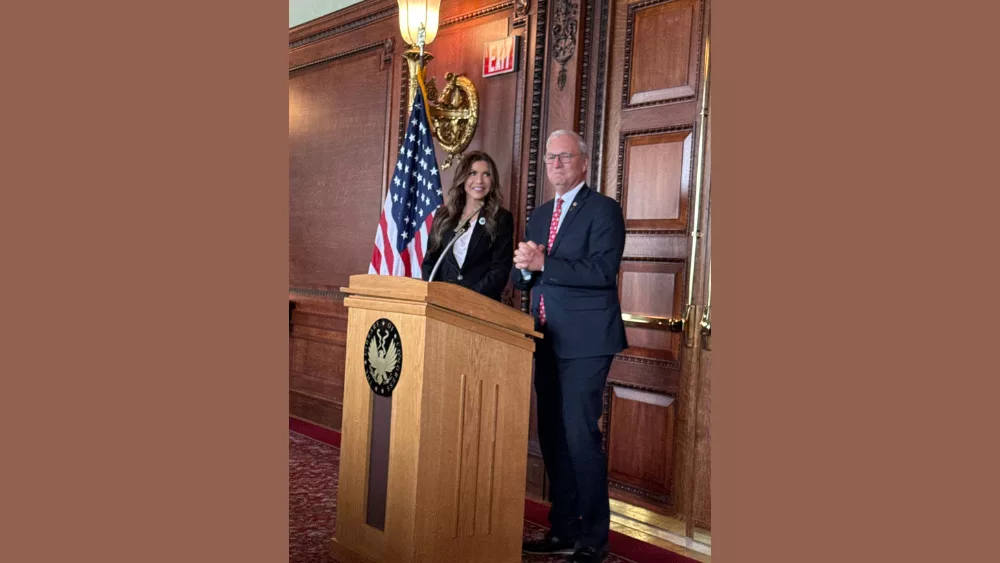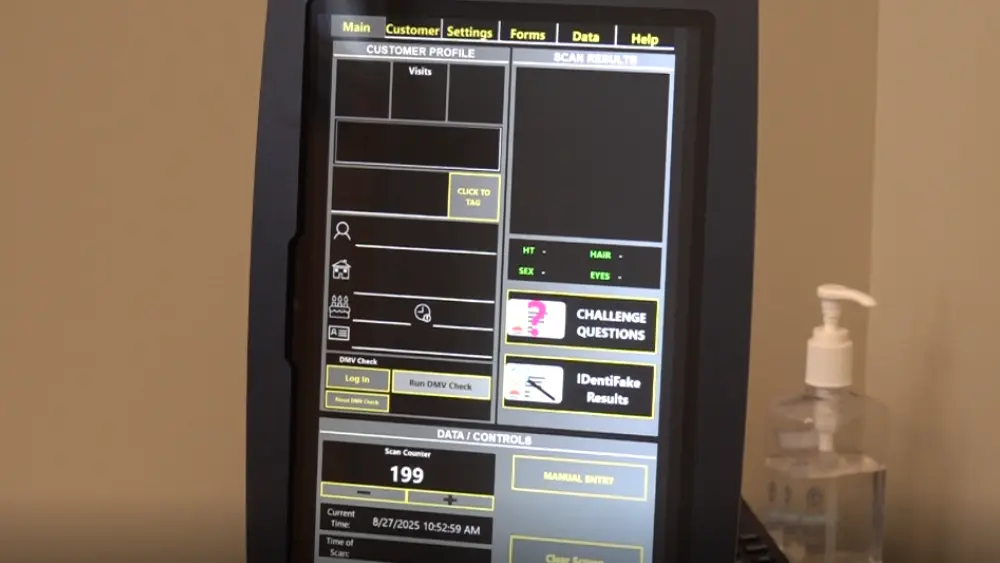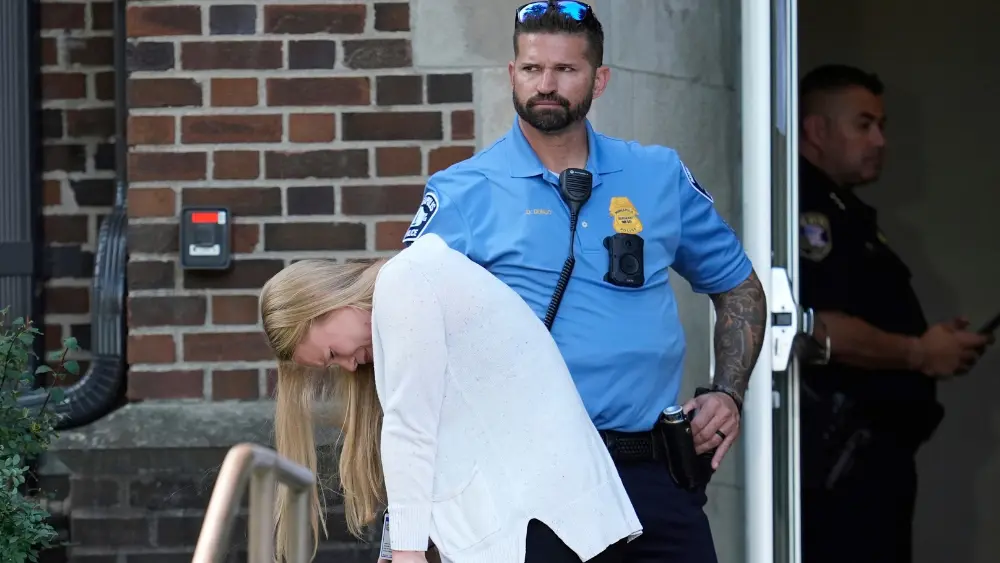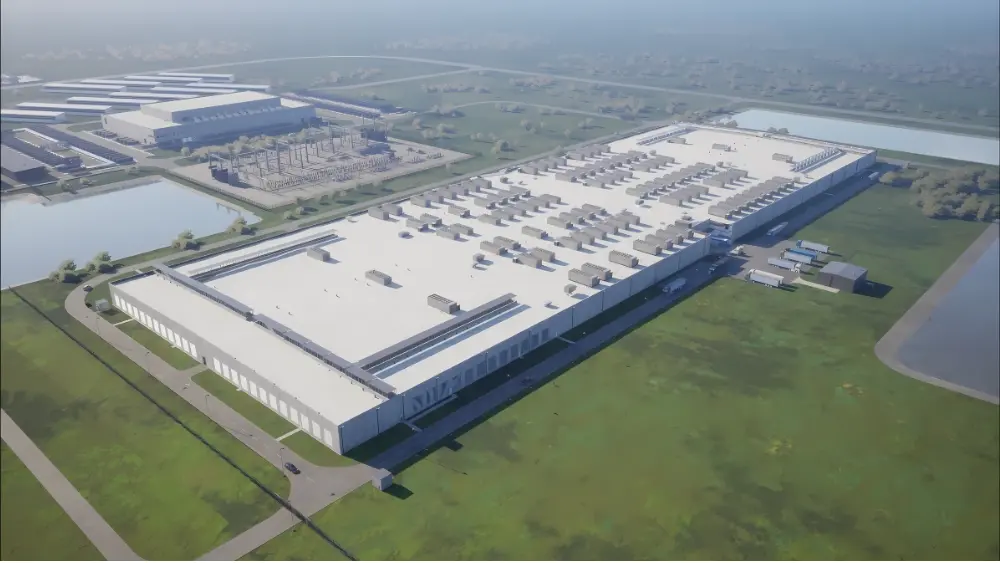WASHINGTON, DC – Former South Dakota Governor Kristi Noem has had quite the change since January 25.
Transitioning from Governor to Homeland Security Secretary
After resigning as Governor, Noem was sworn in as the Secretary of the Department of Homeland Security on the same day – and three days later, she joined multiple law enforcement agencies to lead a raid on illegal immigrants in New York City.
“What a life change it’s been,” she told The Flag’s Scott Hennen in an exclusive interview. “We were just talking today about how much our lives have changed in the last year, but it’s been a wonderful opportunity to get to do a job that’s incredibly important to the future of the United States of America.”
Noem said the job has been challenging – due in part to the previous administration’s work ‘to undermine our safety and security.’
“It was easy to let our country get invaded over the southern border by their lack of law enforcement,” she said. “But it was going to be harder now to get these terrorists and criminals out of our country and go find them and pick them up and remove them.”
Noem, however, said the department has been ‘overwhelmingly successful,’ crediting the leadership of President Donald J. Trump.
“He gave me a job, told me to go do it, and gave me all the authority to make decisions I needed to make to hit the ground running and to be strong,” she said.
Noem said more than two million people have left the country – who were in the United States illegally and have either left to their home country or have been arrested – since Trump took office.
“President Trump said we’re a nation of laws and that we’re going to prioritize Americans over illegals, and if you are here illegally, you need to go home or you’ll never get the chance to come back,” she said.
Border wall
A border wall is being built – thanks to President Trump’s One Big Beautiful Bill and a $43 billion appropriation.
“We currently have contractors out there building wall,” Noem said. “They’re building the steel infrastructure. The contracts for the technology are getting finalized to put in the cameras and the surveillance system.”
Among the technology being put into place is counter-unmanned aerial systems and drone technology, satellite systems and towers and others. The technology will allow for less people to be on the border wall, thus a cost savings for the federal government. It’ll also allow for more knowledge of the border and who’s crossing it, Noem said.
Northern border challenges
While a lot of the talk is about the southern border, the northern border between Canada and the United States is also a concern for Noem and the rest of the Trump administration.
“There was a big problem during the Biden administration of Chinese nationalists coming across the northern border,” she said. “It was easy for them to get into Canada and come across the Great Lakes.”
Because of ‘a lot of traffic of illegals coming through by boat and maritime,’ the United States Coast Guard has been a key part of the U.S. resources. Noem also said there are a couple of new Customs and Border Protection stations being placed ‘to give better surveillance in different areas.’
“Some of the northern border stations up along, especially on the northeast, said all we have right now for security is flowerpots and we’ve deployed more agents up there, (and) more technology,” she said.
Concerns from ag sector
Noem was asked to comment on ag workers and their status in the United States, including Ukrainkians who are in the United States on temporary visas that are not being renewed.
“(President Trump) has streamlined our citizenship processes, streamlined our visa processes, and made sure they have integrity, that people are vetted, but they’re coming in faster than they have in years, because he’s cut the bureaucracy and been responsive to industries like agriculture that rely so heavily on those individuals to fill our workforce,” she said. “I think what’s incredible is under the Biden administration, 88 percent of the new jobs went to foreign-born workers.”
Most of those went to non-Americans, Noem said.
Now, 2.5 million jobs were covered by Americans under Trump.
“President Trump has prioritized them, helped our economy, but also he has made sure that we have an opportunity to give them the chance to provide for their families and to make sure that they can do so safely,” Noem said. “So those visas are important, but they have to be vetted. And then we have to cut the bureaucracy of how long it does take to make sure that you’re participating in our workforce programs.”
FEMA
Several former and current employees of the Federal Emergency Management Agency have been disgruntled.
“We all should just keep a reminder that the vast majority of those individuals who signed a letter complaining about the reforms we’re putting in place into FEMA did so anonymously, so weren’t even brave enough to put their name on the letter,” Noem said. “Then they were contract workers, temporary workers, not full FEMA employees who had taken an oath to respond to people in disaster situations.”
She said President Trump ‘has fundamentally reformed the agency.”
“I know these people don’t want to work, but we’re going to make them work and take care of people,” Noem said. “We have changed everything as it relates on the ground to people in states that rely on FEMA during a crisis.”
The changes are ending up with positive results.
“We are now responding within hours with individuals and people to support local officials who are making the decisions for their communities,” she said. “We’ve deployed dollars within days and not waiting years and years.”
Noem said the work is still being done to eliminate FEMA as it is today.
“The federal government shouldn’t be running disasters. Local officials should run the disaster response,” she said. “The state should be the ones that are out there, you know, operating it and being in charge and the federal government should support.”
A FEMA Review Council is working to give suggestions for law changes, response changes and reforms that can be put into place. Their work will wrap up in October, Noem said, at which time Congress will make decisions on changes.
“in the meantime, we’re implementing all the changes that we have the latitude to do it to fit President Trump’s vision of taking care of folks,” she said.





